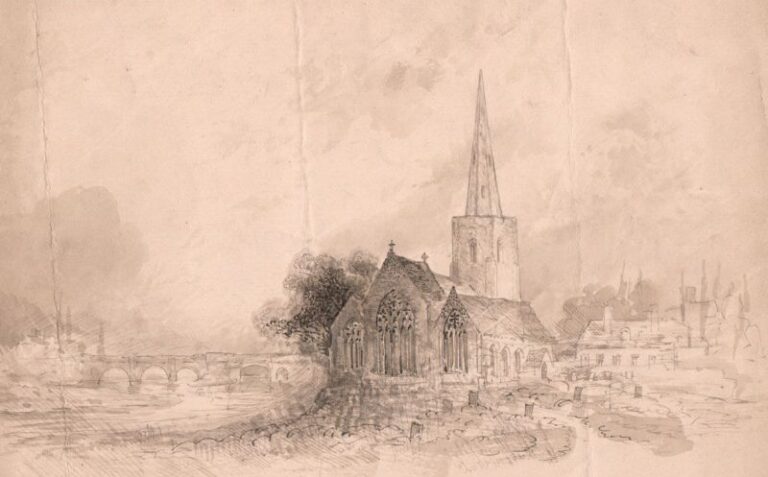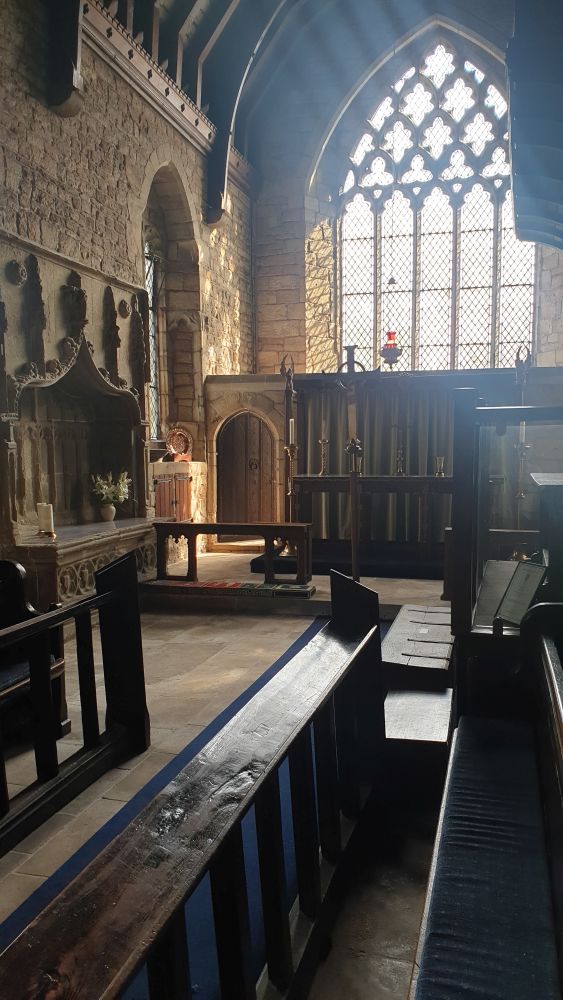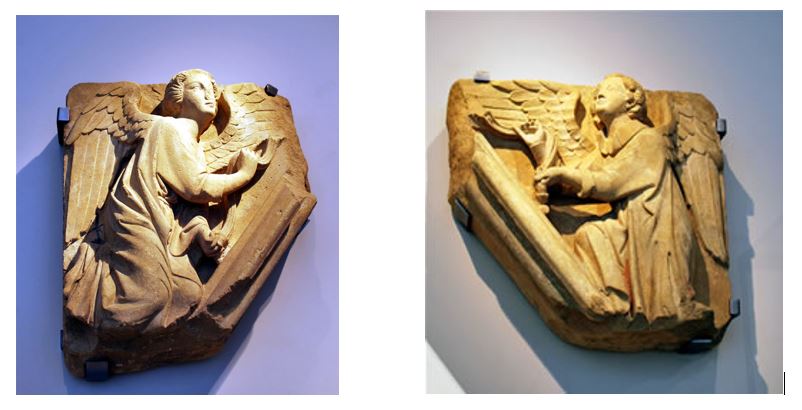Mercia was one of the last parts of Anglo Saxon England to convert to Christianity. In 669 AD a mission from St Chad (the Bishop of Lichfield) converted the people of Salloe. An early Mercian king, probably Wulfhere, gifted Sawley as a manor to the Bishop of Lichfield.
The legend is that a party of monks rowed downstream from Repton to found the first church, which was made of rushes, and this was later replaced by a wooden building. A church certainly existed by 822 AD when Bishop Æthelwold appointed the Canon of Sawley as a prebendary in his Cathedral Church at Lichfield.
Viking invaders, who used the River Trent to reach Repton from Nottingham in 854AD are said to have attacked Sawley on the way and burned the church.


At some point, and certainly by the early 11th century, the church was rebuilt in stone. At the time of the Domesday Survey, a priest and two Churches were named on the Bishop’s demesne, the two Churches certainly being Sawley and Wilne.
In 1259 (the same year as the granting of the Sawley Charter) Ralph de Chaddesden became the prebendary of Sawley. He set about enlarging the church, knocking down walls to add side aisles.
In the 1300s a later prebendary, John de Gauselinus, knocked down the old Saxon church, except for its west wall, and rebuilt it as the chancel to the larger church.

The main entrance used to be on the south (the side away from the road) which is why the porch is there, though today most people enter through the 13th century north door. The tower and spire are probably 15th century. The rear choir stalls are from the Tudor period, and the rood screen from the Stuart period. The pulpit is from 1636. The Bothe family built the present roof and put in a clerestory storey to bring more light to the nave. The clock on the spire was installed in 1880, and the organ in 1906.

Incumbents
Vicars
1266 Hugh de Scoter
1315 William Patris
1343 John de Salloe
1343 William de Bromley
1363 Richard de Braydeston
1369 John de Apthorpe
1390 Richard de Rodyngton
1390 William Beck
1394 John de Acres
1394 William Stapleford
1394 John Peck
1414 John Besage
1430 John Bloreton
1431 John Rysely
Perpetual Curates
1654 R. Holmes
1670 John Pyme
1686 Henry Greatorex
1692 Joseph Bruen
1693 John Bull
1702 Samuel Lees
1706 Francis Coleice
1750 John Kennedy
1754 R. Holmes
1767 W. Garthwait
1768 Benjamin Wigley
1785 Thomas Humphries
1815 John Holme
1819 William Harding
1823 James Lowther Senhouse
1844 Samuel Hey (rector from 1866)
Rectors
1893 Arthur Clarke
1934 R. S. Renfree
1934 W. A. Rundle
1941 Gerald Harcombe
1947 Frank Forest
1954 John William Price
1961 Joseph Bennett Hurst
1969 David J. Chapman
1980 John Warman
1998 Peter Henry
2007 Alicia Petty
Tony Street
The Sawley Angels
The “Sawley Angels”, dating from around 1270-80, are on display in the new sculpture gallery of the Victoria & Albert Museum in London. These beautifully carved fragments come from an ornate tomb canopy, made from Dolomite limestone, and were taken from the church of All Saints, in Sawley.
The angels are perfuming the tomb beneath with incense, just as the body of the deceased might have been censed during the funeral service. Originally painted, the canopy would have drawn attention to the tomb, which must have occupied a prominent position in the church.

Photographs by Barry Cope of the Sawley & District Historical Society
